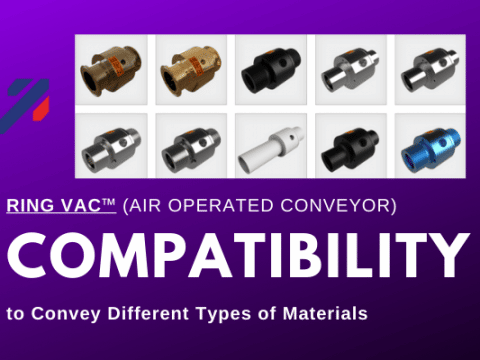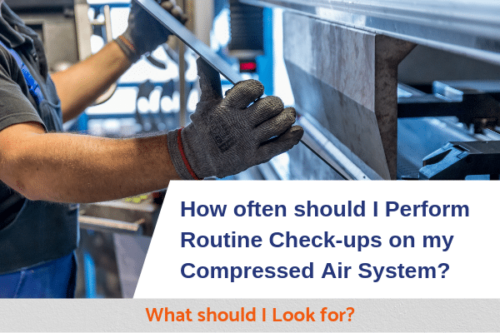
In the previous blog, we focused on tips to prolong the life of your compressed air accessories. Today we will discuss the importance of establishing an inspection routine for your entire compressed air system along with a checklist of items to inspect.
Benefits of Regular Inspections
There are significant returns on the time you spend to inspect your compressed air system regularly. It just takes a little organization to collect detailed information and track changes. This data will encourage and direct your team to perform preventable actions to enhance your compressed air system’s performance. Other benefits of routine inspection include boosting productivity, decreasing waste, optimizing efficiency, seeing opportunities for compressed air applications, and planning for the future. This priceless information regarding efficiency and production, collected just by identifying leaks or areas of potential leaks will allow Nex Flow to recommend cost savings and increased reliability of equipment. It may also encourage your team to simply clean accessories, such as filters regularly. The knowledge of the acceptable working range of the gauges will ensure your system is running well. This knowledge can prevent major damage to equipment and prevent costly repair. It will also prolong the life of your equipment. Simply put, regular inspections will allow your compressed air system to go further, do more, and be more valuable.
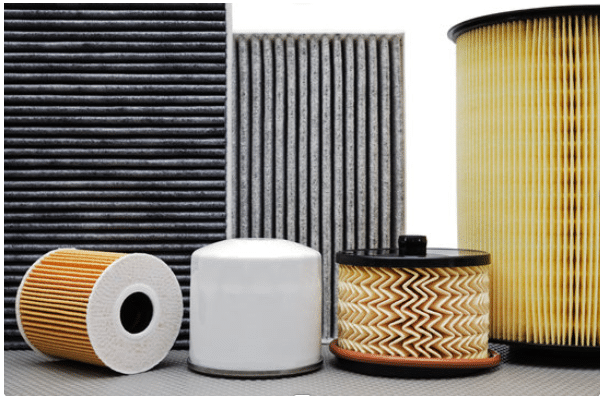
Before the Inspection
It is handy to record the equipment data on a tracking sheet before you begin your inspection. Search through your files and write down the type of compressor, and manufacturer, the model and serial numbers, and flow rating Cubic Feet per Minute (CFM). Other useful compressor information includes the horsepower at revolutions per minute (HP@RPM) and pressure rating pounds per square inch gauge (PSIG). Determine if the compressor is equipped with a pressure gauge or spring-loaded safety valve. Some compressors have a drain valve while others allow you to remove water and oil.
Know the dryer manufacturer, exit flow rate at the dew point (oC or oF), and model and serial numbers. Record the oil/water separator manufacturer, model and serial numbers, and the flow rate in CFM. Keep these inspection sheets in a binder and refer to them often.
Inspection Equipment
To make easy your inspection, Nex Flow offers leak detecting equipment that makes your routine checks effortless. Ultrasonic leak detectors identify issues before they become costly to repair. Auto drains use solenoid valves for compressed air systems where air could be released to the factory floor.
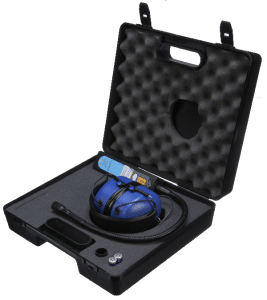
Once the damage, leaks, or cracks are identified, it is important to assess the severity of the issue and prioritize so that you can improve the efficiency of your compressed air system in the best most cost-efficient way. There are various types of compressed air system inspections: visual, mechanical, calibration, and tests. When performing a visual or mechanical test, it is important to keep track of the condition of the equipment: good, dirty, cracked, etc. The age of equipment is important. Piping and tubing over time can build up scale and corrosion. The debris that collects may require cleaning. The following equipment may require replacement: Filter elements, parts in air tools such as O-rings, and tubing.
If the equipment is dirty – then the inspector should tell the employee responsible to clean the equipment. If the equipment is cracked or damaged, the maintenance personnel should be informed so that they can determine the return on investment for either repairing or replacing the equipment. Tracking the condition of your compressed air system is as important as conducting regular inspections.
Inspection List
“Treatment without prevention is simply unsustainable” – Bill Gates
“It is usually impossible to know when you have prevented an accident.” – Mokokoma Mokhonoana
Being proactive by inspecting your compressed air system regularly not only increases the life span of your equipment, but also your operation, maintenance, down-time, and replacement costs will decrease. Leaks divert up to 25 percent of your compressed air away from your system. Finally, it is an excellent source of information that is helpful in determining a return in investment for repairs.
Assessments could include an accurate Cubic Feet per Minute (CFM) scoring for objective measurement. Single stage air compressors may reach pressures of 150 PSI. A single stage pump has higher CFM rating than a two-stage pump since every cylinder compressing air during every rotation.
Here is a list of items to inspect on a daily, weekly, and monthly basis:
Daily
The following items need to checked most often:
- Listen for strange sounds
- Keep everything tight: accessories, nuts, bolts, anchors, and screws
- Check for leaks in the air inlet, receiver, delivery lines, coupling, filters, fittings, valves, and connectors.
- Search for damage to external equipment or component parts
- Quality of pipes: Pipes that are clean, dry, and free of corrosion are great indicators of good quality tubing and hoses
- Wear and tear of equipment, especially piping. Check for damaged, aging, or cracks.
- Check for cracks in drive belts and coolers
- Aging disconnects for leaks
- Oil level on airline lubricators and replace oil regularly
- Compressed air enclosure temperature
- Operating temperature and pressure of the entire system
- Room ventilation temperature should be as cool as possible
- Clear and clean drain traps
- Look for decreases in:
- Pressure
- Dew point
- Refrigerant pressure
- Check lubrication in the distribution system and valves
- Check air quality. It should be free of debris and dry
- Power supply to air compressor is working well
- Ensure that manual distribution condensate traps have not been left open
- Check accessories for wear, dirt, or leaks:
- filters (oil and air),
- separators (shims)
- nozzles
- pumps (air, vacuum)
- fitted drive belts
Weekly
Dust and sludge corrode very quickly and increase leaking in compressed air equipment. Keep the air in the system dry and filtered to reduce maintenance. It is recommended that you check the following weekly:
- Lines
- Gaskets
- Fittings
- Valves
- Clamps
- Connections
- Filters for dust, dirt, or sludge
- Tanks
- Condition of oil
- Compressor
- Check the coolant and refill it regularly since the coolant prevents your system from overheating and prolongs the life of your compressed air system.
- Use test buttons on electronic systems and manual bypass valve to ensure that all drain traps are working correctly
Monthly
The following items should be checked monthly:
- Examine your compressed air system system’s response to manufacturing requirements
- Calibrate sensors, controllers, and valves
- Access your factory’s true production level efficiency and determine areas of improvement
- Completeness of air compressor system assembly
- Equipment rotation
- Equipment identification, labeling and tagging
- Adequate working space for ventilation
- Control system
- Comparison to plans and drawings
- Safety devices
- Test the following for operation efficiency:
- Air compressor
- Air dryer
- Water and oil separator (if applicable)
- Pressure
- Filter and traps
- System test
- Receiver system is stopping at the set maximum pressure
Most importantly, take notes and track your information so that you can identify trends and budget for future expenses such as repair and replacement of aging equipment. Information that is important to note includes: operating temperatures, pressure, flow, and levels.
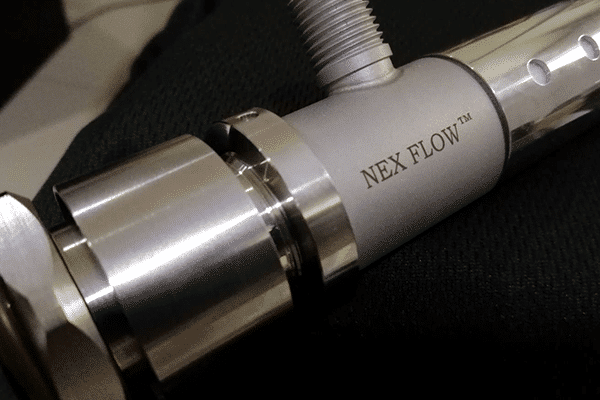
After the Inspection
Regular inspections should be conducted by the same employee but if that is not possible track the personnel who did the inspection by recording the following information: Name, Designation, Contact Information, the Time and Date of the inspection with signature sign off. The inspection should be acknowledged by your safety liaison officer and manager. The approval of the inspection should be signed by the person responsible for inspection. Typically, the person responsible is the factory floor manager.
Nex Flow technical experts are happy to help you inspect, analyze, and recommend areas in your factory environment that could improve cost savings, reliability, and productivity.





